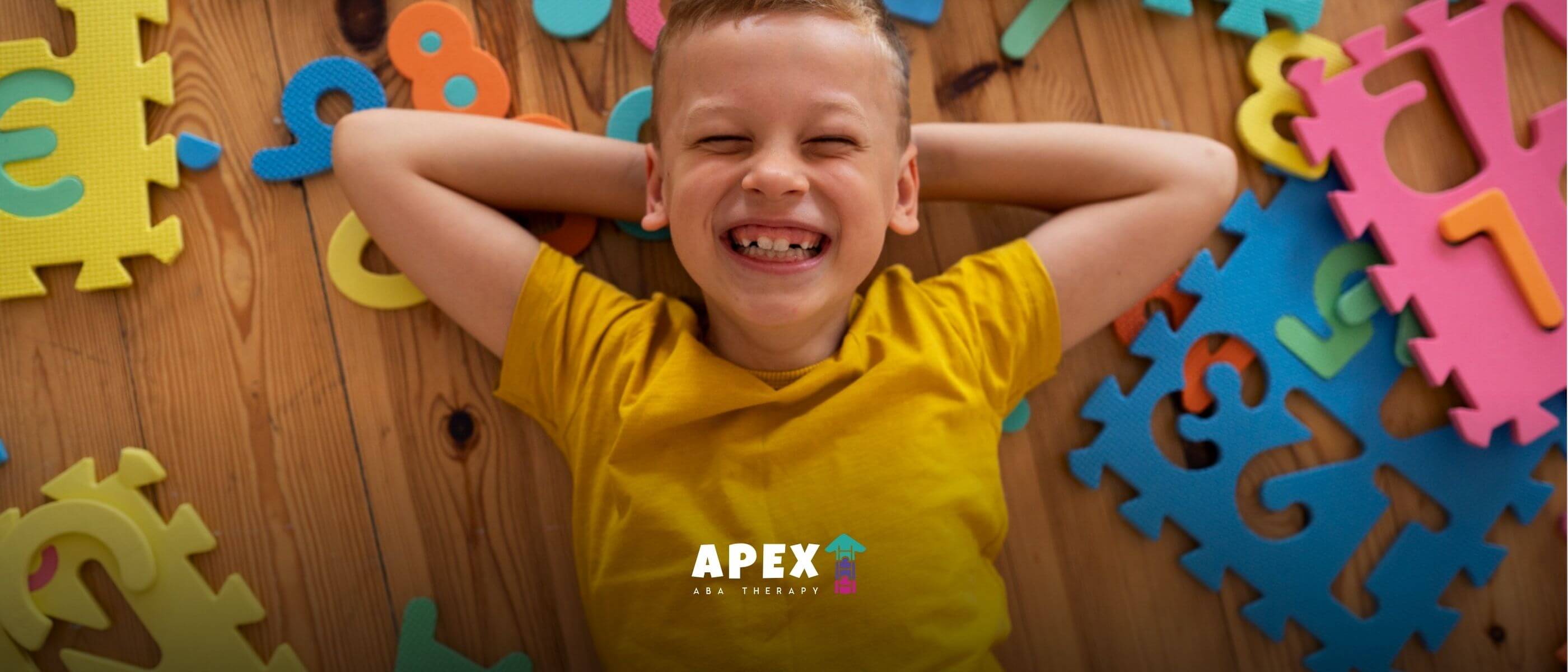Benefits of Weighted Blankets for Autism
If you are a parent of a child with autism, you might have heard about the benefits of using a weighted blanket. As the name suggests, a weighted blanket is heavier than a regular blanket and is designed to apply deep pressure touch stimulation to the body.
.jpg)
Benefits of Weighted Blankets for Autism
Understanding Autism and Sensory Needs
To fully grasp the benefits of weighted blankets for children with autism, it is important to first understand what autism is and the sensory processing challenges that individuals with autism may face.
What is Autism?
Autism, also known as Autism Spectrum Disorder (ASD), is a neurodevelopmental disorder that affects communication, social interaction, and behavior. It is characterized by a wide range of symptoms and severity levels.
Individuals with autism may have difficulties with verbal and nonverbal communication, social interactions, and repetitive behaviors. Autism is a lifelong condition that affects people across all racial, ethnic, and socioeconomic backgrounds.
Sensory Processing Challenges in Autism
Sensory processing challenges are commonly experienced by individuals with autism. Sensory processing refers to the way the brain receives, interprets, and responds to sensory information from the environment.
People with autism may have differences in sensory processing, causing them to be either hypersensitive (over-responsive) or hyposensitive (under-responsive) to sensory stimuli.
Hypersensitivity can manifest as heightened responses to sensory input such as sounds, lights, textures, smells, or tastes. For example, a child with autism may become overwhelmed by loud noises or feel discomfort from certain fabrics.
On the other hand, hyposensitivity may result in a reduced response to sensory input, leading to a lack of awareness of pain, temperature, or other sensory cues.
These sensory processing challenges can significantly impact daily life and make it difficult for individuals with autism to regulate their emotions, focus, and engage in activities. Weighted blankets have emerged as a potential tool to help address these challenges and provide comfort and support.
Understanding the unique needs of individuals with autism and their sensory profiles is essential for selecting appropriate interventions, such as weighted blankets, that can help promote a sense of calm and well-being.

Introduction to Weighted Blankets
Weighted blankets have gained significant attention for their potential benefits in helping children with autism manage sensory challenges and promote relaxation. In this section, we will explore what weighted blankets are and how they work.
What are Weighted Blankets?
Weighted blankets are specially designed blankets that are filled with materials such as plastic pellets, glass beads, or other small weighted objects. These added weights distribute deep pressure evenly across the body when the blanket is placed on top of a person. The weight of the blanket provides a gentle, calming pressure that can promote a sense of security and comfort.
The weight of a blanket can vary depending on the size and individual needs. It is generally recommended that the weight of the blanket should be around 10% of the user's body weight. However, it is important to consult with a healthcare professional or occupational therapist to determine the most appropriate weight for an individual with autism.
How Weighted Blankets Work?
Weighted blankets work by applying deep pressure stimulation to the body, which can have a calming and soothing effect on the nervous system. This pressure can help regulate sensory input and promote a sense of calmness, reducing feelings of anxiety and stress.
The deep pressure from a weighted blanket can trigger the release of neurotransmitters like serotonin and dopamine, which are associated with feelings of relaxation and well-being. This can help individuals with autism manage sensory processing challenges and improve their overall emotional well-being.
It's important to note that weighted blankets are not a cure for autism, but they can be a useful tool to help individuals with autism cope with sensory sensitivities and promote a sense of security and comfort.
When used appropriately and under the guidance of healthcare professionals, weighted blankets can be a valuable addition to a sensory management plan for children with autism.
Benefits of Weighted Blankets for Children with Autism
Weighted blankets have gained recognition for their potential therapeutic benefits for children with autism. These blankets provide a gentle, deep pressure touch that can have a calming effect and help address sensory processing challenges. Let's explore the specific benefits of weighted blankets for children with autism.
Calming and Relaxation
One of the primary benefits of weighted blankets for children with autism is their ability to promote a sense of calm and relaxation. The deep pressure touch provided by the weight of the blanket can help soothe sensory overload and reduce anxiety. This calming effect can be particularly beneficial during times of stress or when transitioning between activities.
Weighted blankets can create a comforting environment that helps children with autism feel secure and supported.
The pressure applied by the blanket stimulates the release of serotonin, a neurotransmitter associated with feelings of well-being and relaxation. This can contribute to a sense of serenity and emotional regulation.
Sensory Regulation
Children with autism often experience sensory processing challenges, where they may be hypersensitive or hyposensitive to certain sensory stimuli. Weighted blankets can play a role in sensory regulation by providing proprioceptive input, which is the deep pressure that helps individuals better understand and manage their body's position in space.
The gentle, even pressure from a weighted blanket can help children with autism feel grounded and centered. This can aid in reducing sensory-seeking behaviors or hypersensitivity to external stimuli. By providing a consistent and controlled sensory experience, weighted blankets can help children regulate their sensory responses and improve focus and attention.
Improved Sleep
Sleep disturbances are common among children with autism. Weighted blankets have shown promise in promoting better sleep quality and duration. The calming effect of the deep pressure touch can help children relax and fall asleep more easily. The weight of the blanket can also provide a sense of security, reducing restlessness during the night.
It's important to note that when using a weighted blanket for sleep, it should be appropriately sized and weighted according to the child's age, weight, and individual needs. Consulting with an occupational therapist or healthcare professional can help determine the optimal weight and size for the blanket.
Weighted blankets offer a range of potential benefits for children with autism, including promoting calmness and relaxation, aiding sensory regulation, and improving sleep quality.
These benefits can have a positive impact on a child's overall well-being and daily functioning. However, it's essential to consider individual preferences and consult with healthcare professionals when incorporating weighted blankets into a child's routine.
Choosing the Right Weighted Blanket
When it comes to selecting a weighted blanket for a child with autism, several factors need to be considered to ensure the best fit and optimal benefits. Here are some key considerations when choosing the right weighted blanket.
Weight and Size Considerations
The weight of the blanket is a crucial factor in providing the desired sensory input and therapeutic benefits. It is generally recommended to select a weighted blanket that is around 10% of the child's body weight.
However, it is essential to consult with a healthcare professional or occupational therapist to determine the appropriate weight for your child.
The size of the blanket is also important to ensure proper coverage and comfort. The blanket should be large enough to cover the entire body but not so large that it becomes overwhelming or restrictive. Consider the dimensions of the blanket and choose a size that provides a comforting, snug feeling without being too constricting.
To assist you in selecting the appropriate weight and size, here is a general guideline:
Fabric and Texture Preferences
The fabric and texture of the weighted blanket can significantly impact the sensory experience for a child with autism. Some children may have specific preferences for certain fabrics or textures, so it's important to consider their sensory sensitivities and personal comfort.
Soft, breathable fabrics like cotton or minky are commonly used for weighted blankets. These materials provide a gentle and soothing touch that can promote relaxation and comfort. However, it's crucial to ensure that the fabric is hypoallergenic and safe for the child's skin.
Texture preferences may vary from child to child. Some may prefer a smooth texture, while others may find a textured surface more calming. Consider the sensory needs and preferences of your child when selecting a weighted blanket.
You can involve your child in the decision-making process by allowing them to touch and feel different fabrics and textures to determine what feels most comforting to them.
Safety and Comfort Features
When choosing a weighted blanket for a child with autism, safety and comfort features should not be overlooked. Look for blankets that have secure stitching and reinforced seams to ensure durability and prevent any leakage of the weighted filling.
It's essential to select a blanket that is easy to clean and maintain, as it will likely require regular washing. Check the care instructions to ensure that the blanket can be safely laundered without compromising its quality.
Additionally, consider whether the weighted blanket has removable covers or additional layers for customization. This allows for adjusting the weight and temperature based on the child's preferences and changing needs.
By considering weight and size, fabric and texture preferences, as well as safety and comfort features, you can choose a weighted blanket that meets the specific needs of your child with autism. Remember to consult with healthcare professionals or occupational therapists for personalized guidance and recommendations.
Using Weighted Blankets Effectively
To maximize the benefits of weighted blankets for children with autism, it's important to use them effectively. This section will explore three key aspects of using weighted blankets: introducing the weighted blanket, establishing a routine, and consulting with occupational therapists.
Introducing the Weighted Blanket
When introducing a weighted blanket to a child with autism, it's essential to approach it with patience and sensitivity. Here are a few steps to consider:
- Explain the purpose: Help the child understand the purpose of the weighted blanket in a simple and age-appropriate manner. Emphasize that it is a tool to provide comfort and help them feel calm.
- Gradual introduction: Start by slowly introducing the weighted blanket during shorter periods, such as during relaxation time or before bedtime. This allows the child to acclimate to the sensation gradually.
- Offer choices: If possible, involve the child in the selection process by allowing them to choose the color or pattern of the weighted blanket. This involvement can help foster a sense of ownership and comfort.
- Positive reinforcement: Encourage and praise the child for their willingness to try the weighted blanket. Positive reinforcement can help create a positive association with using the blanket.
Establishing a Routine
Consistency is key when using weighted blankets for children with autism. Establishing a routine can provide a sense of predictability and comfort. Consider the following tips:
- Designated time and place: Set a specific time and place for using the weighted blanket, such as before bedtime or during designated relaxation breaks. This helps the child associate the weighted blanket with relaxation and calmness.
- Visual cues: Use visual cues, such as a visual schedule or a timer, to signal when it's time to use the weighted blanket. Visual cues can provide a clear structure and help the child anticipate and transition into using the blanket.
- Comfortable environment: Ensure that the environment is conducive to relaxation. Minimize distractions, create a soothing atmosphere, and provide a comfortable space for the child to use the weighted blanket.
Consulting with Occupational Therapists
Consulting with an occupational therapist who specializes in sensory integration can provide valuable guidance and support. Occupational therapists can:
- Assess individual needs: Occupational therapists can assess the child's sensory needs and recommend appropriate weighted blanket options based on their specific requirements.
- Provide customized strategies: They can offer personalized strategies to optimize the use of the weighted blanket within the child's daily routine. This may include incorporating other sensory activities or techniques alongside the use of the blanket.
- Monitor progress: Occupational therapists can monitor the child's progress and make any necessary adjustments to the weighted blanket routine. They can also provide additional recommendations for other sensory tools or interventions that may complement the use of the blanket.
By introducing the weighted blanket gradually, establishing a routine, and seeking guidance from occupational therapists, parents can ensure the effective use of weighted blankets for children with autism. Remember, each child is unique, so it's important to tailor the approach to their individual needs and preferences.
FAQs
Are weighted blankets safe for children with autism?
Yes, when used properly, weighted blankets are safe for children with autism. However, it's important to choose a blanket that is the appropriate weight and size for your child.
Can a weighted blanket be too heavy for my child?
Yes, a blanket that is too heavy can be overwhelming and uncomfortable. It's important to follow the general rule of choosing a blanket that is 10% of your child's body weight.
How long should my child use a weighted blanket?
There is no set time limit for how long an individual with autism should use a weighted blanket. However, it's important to monitor your child's comfort level and adjust usage as needed.
Can adults with autism benefit from using a weighted blanket?
Yes, adults with autism can also benefit from using a weighted blanket. The calming effect of the pressure can help to reduce anxiety and promote relaxation.
Do I need a prescription to purchase a weighted blanket?
No, you do not need a prescription to purchase a weighted blanket. However, it's always best to consult with your healthcare provider before trying any new therapies or treatments.
Conclusion
In conclusion, weighted blankets can be a helpful tool for parents of children with autism. The deep pressure touch stimulation provided by a weighted blanket can help to reduce anxiety, improve sleep, and provide sensory input that can be calming and comforting.
When choosing a weighted blanket, it's important to consider the weight and size of the blanket to ensure that it provides the right amount of pressure for your child.
Sources
Frequently Asked Questions

How to Teach Kitchen Safety to Autistic Children: A Parent’s Guide
Teaching kitchen safety to autistic children is easier with the right strategies. Learn step-by-step tips to create a safe environment and build essential skills.

How to Manage Attention-Seeking Behaviors in a Positive, Supportive Wayr
Learn how to reduce attention-seeking behaviors in children using positive reinforcement, clear boundaries, and communication skills. Find helpful strategies here.

Can Play Therapy and ABA Therapy Work Together to Help Your Child?
Combining play therapy with ABA therapy offers a powerful way to enhance your child’s growth. Find out how these therapies work together for lasting benefits.



